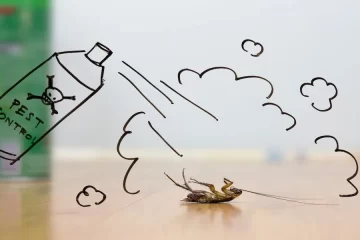Signs of Rodent Infestations and How to Address Them

Rats on wood in cell. Many rats
Rodents such as mice and rats can cause significant damage to homes and pose health risks to residents. Identifying the signs of a rodent infestation early can help you take swift action to address the problem. This article outlines common indicators of rodent activity and provides effective strategies for addressing infestations.
Identifying Rodent Infestations
Recognizing the signs of a rodent infestation is crucial for timely intervention. Here are some common indicators:
- Droppings
- Rodent droppings are often found near food sources, in drawers, cupboards, and along walls.
- Fresh droppings are dark and moist, while older droppings are dry and crumbly.
- Gnaw Marks
- Rodents constantly gnaw on objects to keep their teeth sharp. Look for gnaw marks on furniture, wires, and food packaging.
- New gnaw marks are lighter in color and become darker as they age.
- Nests
- Rodents build nests from shredded paper, fabric, and other soft materials. Nests are typically located in hidden areas such as behind appliances, in wall cavities, and in attics.
- Saela Pest Control experts recommend inspecting these areas regularly for signs of nesting.
- Tracks and Runways
- Rodents often travel along the same paths, leaving greasy marks along walls and floorboards.
- Dust or flour can be sprinkled along suspected paths to reveal footprints.
- Sounds
- Scratching, squeaking, and scurrying noises, particularly at night, can indicate the presence of rodents.
- Listen for these sounds in walls, ceilings, and attics.
- Odor
- A strong, musty odor can indicate a heavy rodent infestation.
- This smell is often caused by urine and droppings.
- Damage to Food and Packaging
- Rodents chew through food packaging and leave behind droppings and urine, contaminating food supplies.
- Store food in airtight containers to prevent access.
Addressing Rodent Infestations
Once you have identified a rodent infestation, it is important to take immediate action to eliminate the problem. Here are some effective strategies:
- Seal Entry Points
- Inspect your home for gaps, cracks, and holes that rodents could use to enter. Seal these entry points with steel wool, caulk, or metal flashing.
- Pay special attention to areas around pipes, vents, and foundation cracks.
- Eliminate Food Sources
- Keep food stored in airtight containers and clean up spills promptly.
- Regularly dispose of garbage and use trash cans with tight-fitting lids.
- Use Traps and Baits
- Snap traps, glue traps, and live traps can be effective in capturing rodents.
- Place traps along walls and in areas where rodent activity has been observed.
- Use bait such as peanut butter, nuts, or dried fruit to attract rodents to the traps.
- Maintain Cleanliness
- Regularly clean your home to remove food particles and clutter that can attract rodents.
- Vacuum and sweep frequently, paying special attention to kitchen and dining areas.
- Professional Pest Control
- If the infestation is severe, or if you are unable to eliminate the rodents on your own, it is advisable to seek professional help.
- Saela Pest Control offers comprehensive rodent control services, including inspection, trapping, and exclusion techniques.
- Monitor and Prevent
- After addressing an infestation, continue to monitor for signs of rodent activity.
- Implement preventative measures such as regular inspections and maintenance to keep rodents from returning.
Conclusion
Rodent infestations can be a serious problem, but early detection and prompt action can help you manage and eliminate these pests effectively. By recognizing the signs of an infestation and implementing the strategies outlined above, you can protect your home from the damage and health risks associated with rodents. For expert assistance, consider consulting Saela Pest Control for professional and effective rodent management solutions.











